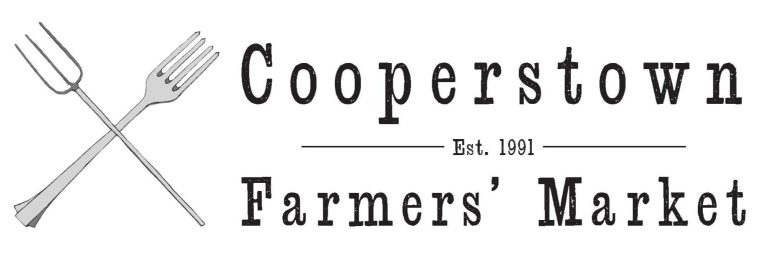IN MEMORIAM Brian F. Carso, Sr., 90 May 10, 1930-March 2, 2021 FLY CREEK – Brian Francis Carso, Sr., a long-time and well-respected licensed land surveyor, passed away Tuesday morning, March 2, 2021, at his home on Goose Street in Fly Creek. He was 90. Brian was born on May 10, 1930, in Queens, one of six children of A. Francis and Elizabeth (Megnin) Carso. His father was a civil engineer, and his mother had served as a Marine Corps…
Fly Creek news
IN MEMORIAM William J. Ubner, 90; Played On ‘Red’ Bursey’s Unbeaten ’47 Team FLY CREEK – William J. Ubner, who played on legendary Cooperstown football coach Lester G. “Red” Bursey’s 1947 undefeated team, passed away in his sleep Monday evening, Nov. 23, 2020, at his home in Fly Creek Valley. He was 90. A true outdoorsman, animal lover and almost 30-year employee of the Otsego County Highway Department, he was born on Dec. 16, 1929, at home on the family…
LETTER from ADRIAN KUZMINSKI Sanctuaries Recipes For Anarchy To the Editor: In his letter to the editor of Nov. 12-13, county Rep. Rick Brockway, R-West Laurens, points out that the Village of Cooperstown was “made a sanctuary haven for illegal immigrants.” Indeed, the village, in April, 2017, voted unanimously, as reported in this newspaper, “not to participate in the Delegation of Immigration Authority’ under the Immigration & Nationality Act of 1996.” Invoking the same idea from the opposite end of…
Raging Fire Destroys Antiques-Filled Barn By LIBBY CUDMORE • Special to www.AllOTSEGO.com FLY CREEK – Inside the barn at 325 Williams Road, Chief Chris Vuolo, Fly Creek Volunteer Fire Department, could hear “multiple” explosions. “There were propane tanks and boxes of fireworks stored inside,” he said. “No one was hurt, thank God.” The fire, which destroyed Wood Bull Antiques owner Kip Coburn’s barn on Christian Hill, Town of Otsego, on Friday, Nov. 6, was called in by a neighbor at…
A-MAIZE-ING Place Becomes A Regional Draw By LIBBY CUDMORE • Special to www.AllOTSEGO.com FLY CREEK – For her son William’s 12th birthday, Ellen Pernat had the idea to go to a corn maze. “We couldn’t find one close by,” she said. “And I didn’t want to drive three hours.” So they built one. Now in its third year, the Fly Creek Valley Corn Maze is one of the region’s most popular autumn attractions, drawing as many as 500 visitors a…
Victim Identified In Fatal Fly Creek Fire FLY CREEK – The 77-year-old man who perished in the Sunday morning fire in Fly Creek was Robert L. Huestis, according to Trooper Aga Dembinska, Troop C public information officer. Emergency crews were called to the scene at 5:28 a.m. after a call was received by Otsego County 911 of a house fire with an entrapment at 168 Jones Road, near Oaksville. Fly Creek Volunteer Fire Department responded to the scene, where they…
IN MEMORIAM: R. Helen Davis, 95; RN’s Parents Immigrants From Finland FLY CREEK – In the early morning hours of Saturday, April 4, 2020, R. Helen Davis, a long-time resident of Fly Creek, retired registered nurse and cherished mother, passed peacefully with family by her side. She was 95 and the last of the Finnish area immigrants residing in Otsego County. Born July 27, 1924, in a farmhouse off Harrison Hill Road in Mount Vision, she lived her earliest years…
IN MEMORIAM: Emma Jean Shepard, 91; As Girl, Attended Two One-Room Schools FLY CREEK – It is with deep sorrow and much love that we mourn the passing of Emma Jean (Shaw) Shepard of Cooperstown on July 1, 2020, at the age of 91 years. Emma Jean was born to Harold Judson Shaw and Ethel Catherine (Knapp) Shaw February 5, 1929, at Mary Imogene Bassett Hospital in Cooperstown.…
IN MEMORIAM Sharon Ann Congelli, 74; Active With Local Quakers FLY CREEK – Sharon Ann Congelli, 74, who most recently lived with her daughter in Fly Creek, passed away Sunday, May 17, 2020, following a valiant seven-year battle with glioblastoma. She was 74. Born Nov. 20, 1945, in North Hornell, Sharon was the daughter of Duane E. and Carol J. (Bricks) Knapp of Atlanta. After graduating from high school in Wayland she attended the Continental School of Beauty in Rochester.…





